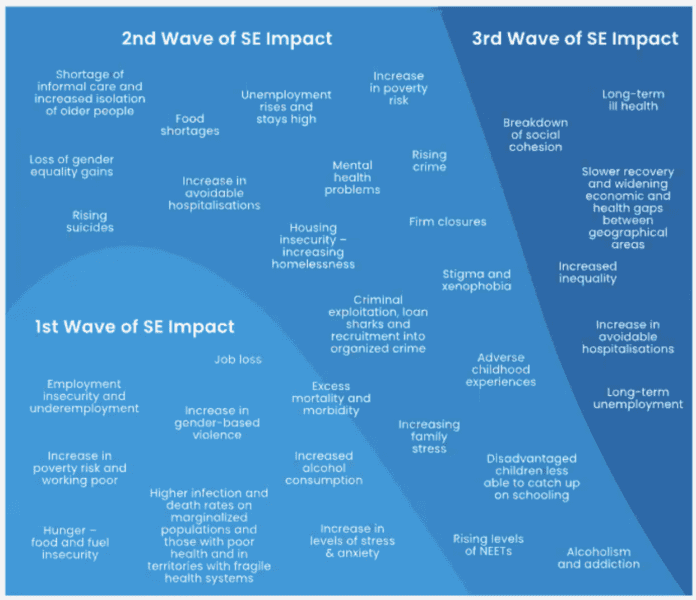In February of 2020, no one could have fathomed that the very next month would usher in the COVID-19 pandemic – an era of global history that has (to date) resulted in 5 million deaths, 240 million cases, trillions of dollars lost, and the worsening of every inequality imaginable.
And while scientists and governments have worked together to make incredible advances in vaccine technology, access, and distribution, it goes without saying that there is more work to be done to finally put the pieces of an exhausted global society back together. On Tuesday, October 12th, the Duke Global Health Institute (DGHI) brought together three leaders in global health to discuss what those next steps should be.
The panel discussion, which was moderated by Dr. Krishna Udayakumar of the DGHI, was titled “The COVID-19 Endgame: Where are we headed, and when will we get there?” The panelists were Dr. Ann Lindstrand, who is the World Health Organization’s unit head for the Essential Program on Immunization; Dr. Ayoade Alakija, who is the co-chair of the African Vaccine Delivery Alliance and founder of the Emergency Coordination Center in Nigeria; and Alberto Valenzuela, who is the Executive Director of the Pan American and Parapan American Games Legacy Project.
Dr. Lindstrand began by setting the stage and highlighting what are undoubted successes on a global level. 6.5 billion doses of the vaccine have been administered around the world, and the vaccines have impressive effectiveness given the speed with which they were developed. Yet undergirding all of this is the elephant in the room that, sitting in a 1st-world country, we don’t think about: high-income countries have administered 32 times more doses per inhabitant compared to low-income countries.
This vaccine inequity has been exacerbated by already weak health security systems, vaccine nationalism, and lackluster political commitment. And while the WHO is slated to enormously ramp up supplies of vaccines in Q4 of 2021 and Q1 of 2022, it doesn’t mitigate the damage to the socioeconomic welfare of people that COVID-19 has already had. Dr. Lindstrand outlines the three waves of socioeconomic impact we will see, but expressed concern that “we’re already beginning to see the first wave pan out.”
Dr. Alakija took this discussion a step further, asserting that COVID-19 is poised to become the disease of low-income countries. “If you’re living in the US or EU,” she remarked, “You’re heading into the ‘Roaring 20s’. If you live in the Global South, COVID-19 is going to become your future.”
To this point, Dr. Alakija emphasized that the only reason this is the status quo is because in her eyes, the world failed to do what was right when it should have. In her home country of Nigeria, she highlighted that out of a population of 210 million people, 5.1 million people have received the vaccine – and of those 5.1 million, just 2 million — one percent — have been double-vaccinated. “It really is a case of keeping those down further down, while giving booster doses to those that have already been vaccinated,” she said. “We don’t have diagnostic data, so people are slipping underwater and the world has no idea.”
It’s worth noting that Nigeria houses some of the megacities of the world, not just in the African continent. So according to Dr. Alakija, “we don’t solve this with a medical lens, we solve this with a whole-of-society lens.” We must, she argued, because in an interconnected world, no one exists in isolation.
Alberto Valenzuela’s work is a great example of this. In 2019, his team led organizing efforts for the Pan American Games in Lima, relying on extensive partnerships between public organizations and corporations. In 2020, though, as the world shifted, the government called on the team to transition into something much different – COVID-19 relief efforts in the country.
The results are staggering. In just 5 weeks, the Pan American and Parapan American Games Legacy Project built 10 hospitals in 5 regions of the country. The implementation of 31 vaccination centers throughout the country resulted in a tripling of the number of people vaccinated per day in Lima. To him, this work “proves what’s possible when private and public sectors merge.” In other words, remarkable things happen when all of society tackles a societal issue.
So where do we go from here? Perhaps the biggest thing that stood out was the need to empower low-income countries to make decisions that are best for them. In Dr. Alakija’s words, “we need to lose the charity model in favor of a partnership model.” Dr. Lindstrand pointed out that there’s a deep know-how in the Global South of how to roll out mass-vaccination efforts – but only when we “lay down our organizational hats” can we move to what Dr. Lindstrand termed “more coordination and less confusion.” Valenzuela emphasized the need to integrate many sectors, not just healthcare, to mobilize the COVID-19 response in countries. But above all, Dr. Alakija said, “there will be no endgame until we have equity, inclusion, and health justice.”
If our reporting has informed or inspired you, please consider making a donation. Every contribution, no matter the size, empowers us to continue delivering accurate, engaging, and trustworthy science and medical news. Independent journalism requires time, effort, and resources—your support ensures we can keep uncovering the stories that matter most to you.
Join us in making knowledge accessible and impactful. Thank you for standing with us!

